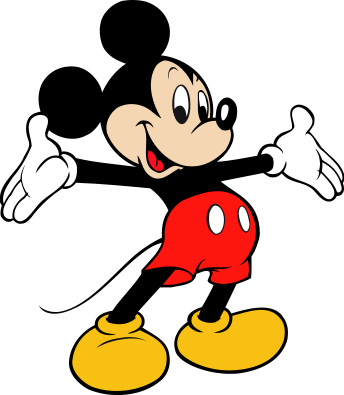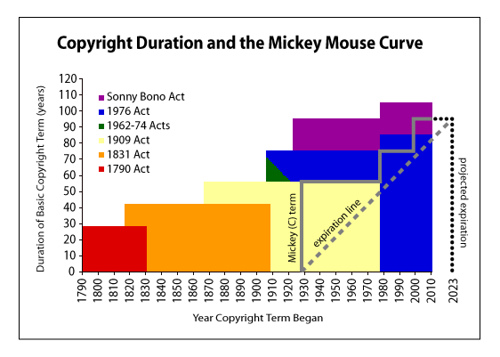Dracula (340 adaptations, created 1897)
Sherlock Holmes (292 adaptations, created 1887)
Frankenstein (202 adaptations, created 1818)
Tarzan (95 adaptations, created 1912)
Alice in Wonderland (45 adaptations, created 1865)
The Wizard of Oz (72 adaptations, created 1900)
The Phantom of the Opera (33 adaptations, created 1910)
A Christmas Carol (99 adaptations, created 1843)
Peter Pan (64 adaptations, created 1902)
Treasure Island (65 adaptations, created 1911)
Pride & Prejudice (26 adaptations, created 1813)
Winnie the Pooh (60 adaptations, created 1924)
Tom Sawyer (45 adaptations, created 1876)
The Three Musketeers (77 adaptations, created 1844)
All tallies according to IMDB. Totals may not be accurate. Actually, I guarantee it.
Notice anything strange? An overwhelming number of our beloved characters and stories come from the 19th century and early 20th century. Is that coincidence? Did we just stop making influential stories after 1929? Or did somebody slam on the cultural brakes?
Yes. Somebody did.
First appearing in 1928, Mickey Mouse was an overnight success, quickly becoming the face of Walt Disney Studios and The Walt Disney Company, as well as an icon of America and animation in general. He's a beloved character, a moneymaker, and a symbol of childhood joy and innocence. But of those three, he is a moneymaker first. Disney owns him, and Disney will make sure they and they alone will profit from him.
It all comes down to the Public Domain. The public domain consists of works that are publicly available; works that are unavailable for private ownership and subject to appropriation by anyone. Anybody can use, enjoy and interpret a public domain work ad infinitum. This is alternative to copyrighted works. Copyright gives the owner the exclusive right to reproduce the work in question, to prepare derivative works, to distribute copies of the work, and to perform/display the copyrighted work publicly. And no single copyrighted work has done more to redefine the definition of the public domain than Mickey Mouse.
The graph above demonstrates how the Walt Disney Corporation has altered and amended the rules of copyrights and copyright extensions. Every time Mickey Mouse comes close to entering the public domain, every time day care centers think they can paint his red shorts on their nursery walls without fear of reprisal, every time t-shirt companies want to emblazon their wares with Mickey's trademark ears without suffering an infringement suit, the Disney lawyers are ready to play hardball.
Disney is renowned for having some of the most vicious and tenacious lawyers in all the world. You don't ever want to be on the other side of a Disney deposition. These were people hired by Jefferey Katzenberg and Michael Eisner to do THEIR dirty work. They are scary people. But they certainly get the job done.
As it stands now, copyright for creative works extends 70 years beyond the creator's death. Or, in the case of corporate-owned content (such as Mickey), 95 years after the content's first publication. Mickey Mouse's image will enter the public domain in 2023 unless copyright extension law is extended again. And most likely, it will be.
This is why the pre-1925 cultural bubble exists. Content created before Mickey Mouse has entered the public domain, where anybody can try their hand at adapting the characters, stories and settings. They're as popular as stories get before the temporal roadblock makes novels, stories and cartoons entirely inaccessible for adaptation and interpretation. Nearly all content created since Mickey Mouse's debut is still privately owned and trademarked, and only a small number of artists, writers, and cartoonists are authorized by the copyright holder to handle that content. It's why there's a new spin on The Legend of Sleepy Hollow every Halloween, but Batman can never be handled by anyone DC disapproves of.
 |
| For some reason, this included Joel Schumacher |
Disney can continue to use Mickey Mouse, they can continue to use Mickey Mouse as their logo, and most certainly Disney can advertise themselves as the originators of Mickey Mouse, but they shouldn't be allowed to deny others the opportunity to utilize the character. For every Mickey Mouse being withheld, there's a Phillip Marlowe, Bilbo Baggins and Cat in the Hat ready to see the grand scale of worldwide recognition, use and acceptance.
Where would Dorothy Gale be without her ruby slippers? They weren't in the original novel, but created for the 1939 film version. Boris Karloff's portrayal of Frankenstein's monster is so detached from Mary Shelley's image, the two are hardly the same character. Sherlock Holmes never said 'Elementary, my dear Watson,' until it was uttered by Basil Rathbone. But now, it's Holmes' most iconic piece of dialogue. And most applicable of all, what would Disneyland look like without Cinderella's castle?




No comments:
Post a Comment